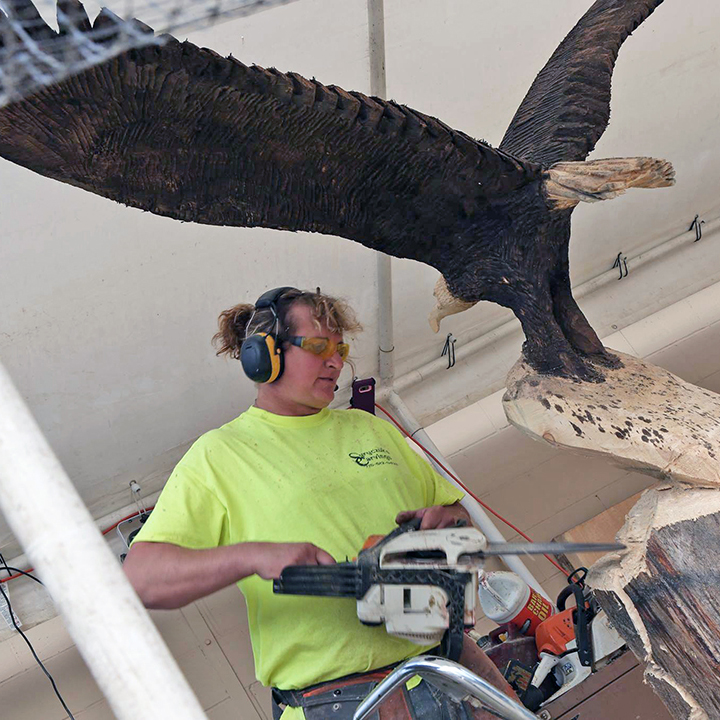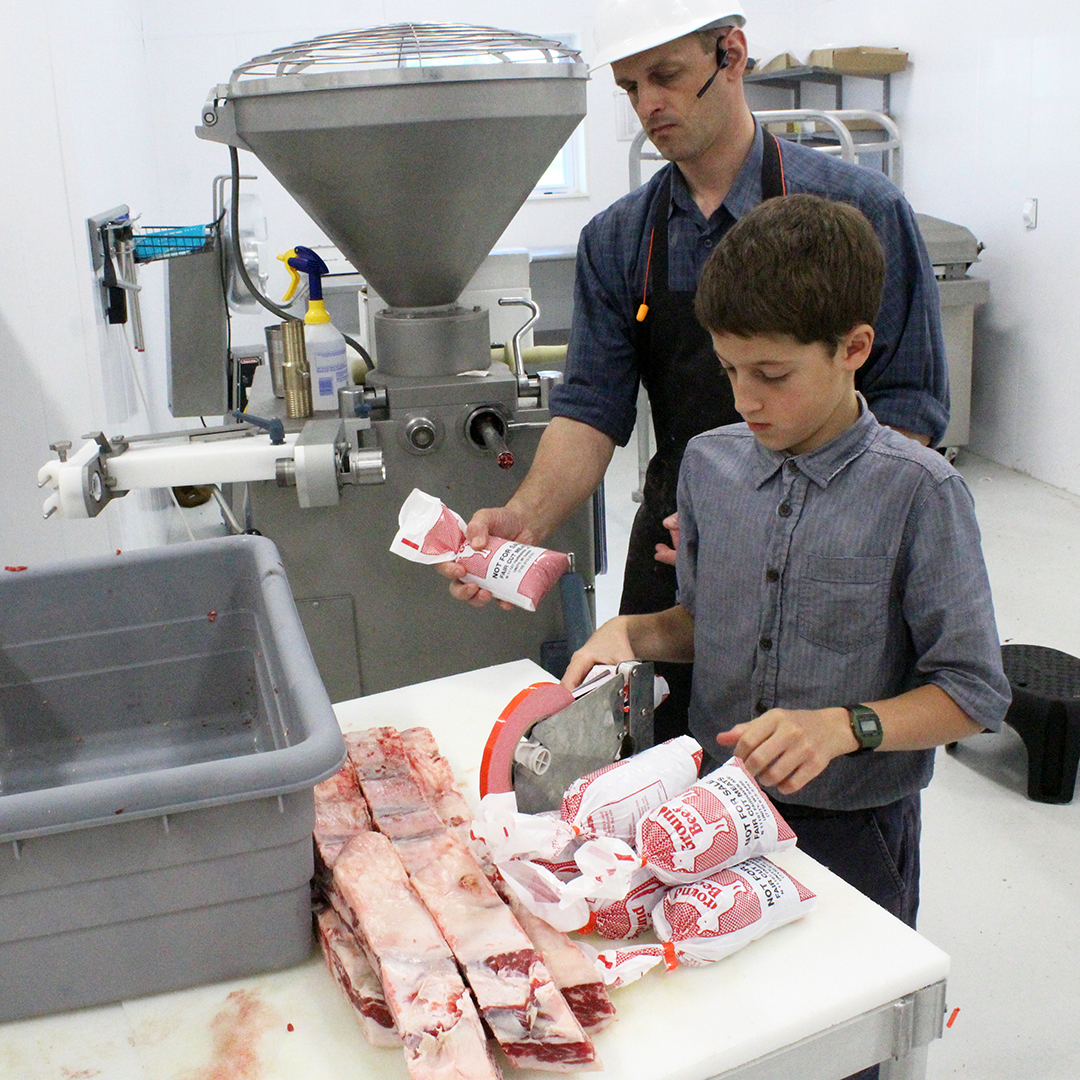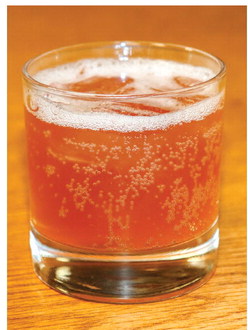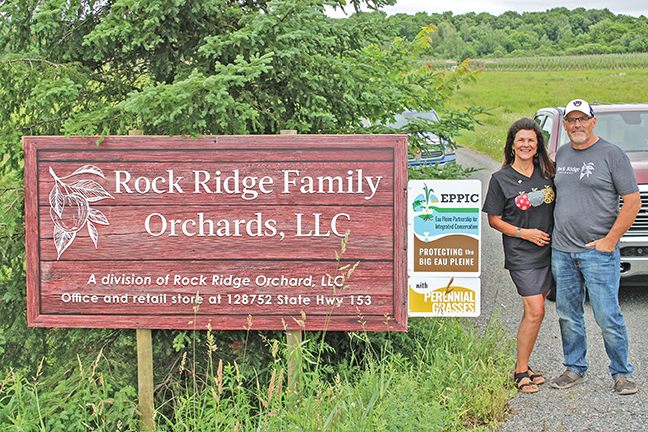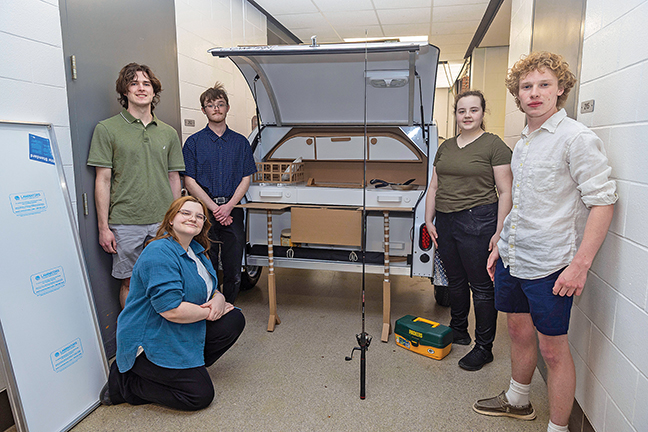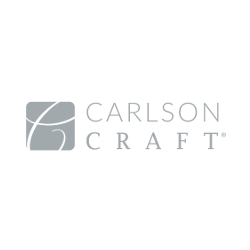An - An artist’s story
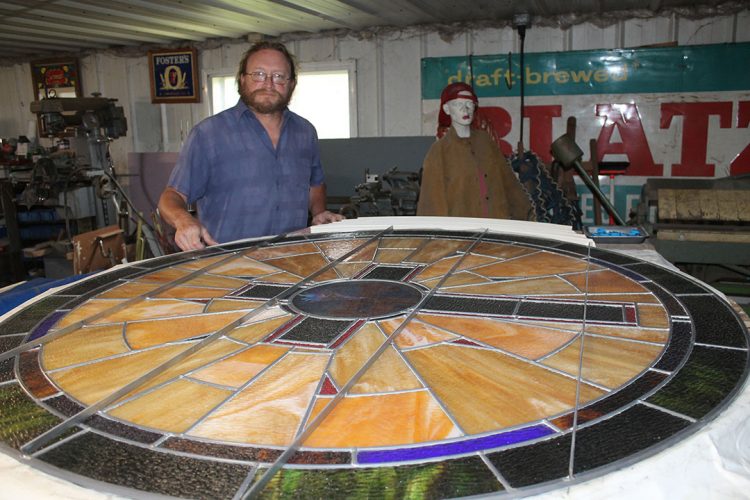

Nate Meyer of Medford, stands behind an 80-year-old window that he restored for six months. Photo by Saskatoon Damm
By Saskatoon Damm, The Star News
Artists’ stories extend beyond pieces of art.
Works of art, for all of the time an artist invests in them, constitute only a fraction of an artist’s story; they display the culmination of an artist’s efforts. Behind each piece, there is an artist, a person painstakingly dedicated to their craft.
“I’ve been doing both the carving and the stained glass for over 30 years and been able to struggle out a living with it. It’s not something for the timid or the weak,” said Nate Meyer of Medford. His catalogue of work spans myriad forms, though his experience is predominately in stained glass, wood carving, and metalwork.
While Meyer is passionate about his work, he recognizes the unforgiving realities attached to art as a profession. Any kind of career comes with trade-offs, but the heightened income uncertainty of an artist can be especially restrictive. Meyer has steady work in stained glass now, but working to establish his current level of stability was not an easy task. “It was important early to show I could, to prove I could, support myself with this. That might not have worked with a family,” he explained.
A love for drawing compelled Meyer to accept these sacrifi ces and pursue studies in art following high school. He attended the Minneapolis College of Art and Design, where he initially planned to major in animation. After seeing industry trends toward computerized animation rather than illustration-based animation, Meyer switched courses, earning a double major in fine arts and design. He learned about the history of design and art history, developing an appreciation for the past that continues to motivate him in his stained glass work today.
“I have a real genuine, almost compassionate feeling towards keeping that art form and the restoration conservation going,” Meyer said as he examined a stained glass window he recently restored. The 80-year-old window is set to be reinstalled at Colby First United Church within a month. Meyer described this window as one of the most difficult projects he has worked on. Its circular shape posed a challenge because rounded pieces are more prone to crack as they are cut.
When Meyer originally removed the window from the church and transported it to his workshop, it was falling apart. First, he made a pattern of the window to ensure he would put it back exactly as it was. Next, he ordered replacement stained glass, lead, and rebars. Following this, he disassembled the window and cleaned all of the intact stained glass. On this window, Meyer replaced a third of the stained glass, which entailed cutting and grounding the new pieces to fit the exact size of the old pieces. He then rebuilt the window with all new lead framework and soldered hundreds of joints on both sides of the window. He subsequently cemented the window. “[Cementing] is like a four day marathon. I get a few hours to go home and sleep that first night,” Meyer said. After the intensive four days, he cleaned both sides and soldered rebar supports on the window. All in all, the window took six months of work.
To get to the point where he can handle projects in which several art forms intersect, Meyer took a winding path. Post graduating from the Minneapolis College of Art and Design, he sought to gain knowledge through a diverse set of experiences. He took classes at Saint Paul Tech in machining, enrolled in courses at the University of Minnesota to learn about casting bronze and bending neon, worked as a sign maker for five years, and apprenticed in several disciplines for over a decade.
Meyer’s experience as a sign maker provided an opportunity to build on his skills with metals while paying off his student loans: “It was a good blue collar trade that I could learn a lot and make good money. I got to do a lot of different things. I could work with the designer, the painter.
The company I ended up working with for five years paid off all of my student loans and allowed me to still make art. I was learning how to better weld. I already knew how to weld. I was learning how to [better] fabricate (beginning as a ten-year-old, he welded and fabricated metal at his father’s auto body shop, Meyer Auto Body, in Medford). I was learning how to design and paint old school hand lettering. [T]hat really helped me cut my teeth, and I’ve been expanding ever since then.”
Retrospectively, Meyer’s most formative experience came from being an apprentice at Gaytee Stained Glass studio in Minneapolis. There, Meyer was introduced to the stained glass work that has become his calling card. He almost works exclusively with stained glass these days because of the “endless amount” of work available in the field. His restoration pieces are scattered throughout the area at churches such as Historic Saint Anne’s near Rib Lake, where Meyer has done restoration and conservation work for 20 years.
Along with restoration work, Meyer utilizes his skills to create new works of stained glass. His most expansive collection of original stained glass work is at the Colby Community Library. Making new stained glass art reconnects him with drawing, bringing full circle the passion that inspired him to attend art school and his career’s focus. “I’m still designing and drawing. That illustration is still there,” he said.
For Meyer, the process of creating art also involves a rewarding relationship with clients. “I get to create all kinds of fun designs and kind of see if I can bring out what people really want. It’s not what I want. I have to help them figure out what they want. Usually, I start that process by figuring out what they don’t want. It’s fun to work with people in that sense,” he stated.
Meyer’s most memorable client was the Swedish Hospital Alumni Association, which provided him with “300 or 400 adopted aunties and great aunties.” He was commissioned by the alumni group to create a wooden carving of a nurse capping ceremony. “Four years of work for one client. I carved three nurse figures that are half life size in solid cherry and hospital buildings that were part of their history.” He continued, “Big sis is capping little sis, and there’s a graduate nurse in the background.” This piece is on permanent display at the American Swedish Institute in Minneapolis, honoring more than 3,000 nurse graduates of the Swedish Hospital of Nursing in Minneapolis, Minnesota, from 1899-1973.
Prior to the nurse project, to become adept at wood carving, Meyer apprenticed for eight years with a Greek wood carver named Konstantinos Papadakis. With Papadakis, he worked on Greek Orthodox church icon screens, which look like walls elaborately ornamented with religious figures and other significant symbols. “Three carvers could work a whole year on one icon screen. Some of them were pretty involved. A lot of those went down to Florida in Melbourne, Jacksonville, Orlando. [Papadakis] had work all over the country and all over the world, so that was quite an influence,” Meyer said.
In a prominent local piece, Meyer made use of his wood carving abilities to create a mold for the bronze statue of Jesus that overlooks the Evergreen Cemetery just outside of Medford. “I carved that and took it to a foundry, a bronze foundry in Stillwater Minnesota, and they cast Jesus the Risen Christ there in 13 different pieces because they couldn’t do one big piece,” he said. “Most people that do bronze work would do clay or wax [for the mold]. I’m a wood carver so I made the pattern out of wood.”
Unfortunately, Meyer is unable to do much wood carving due to nonviable economics in the Medford area. “You need a client that really wants to invest in the fine hand carved work. If I had more of that work around here, I’d like to do it, but I don’t. Those clients are a little wealthier than the population around here,” he remarked.
A common thread in Meyer’s story is his continuous choice to be a lifelong student of multiple art forms. He applies his unique blend of experiences and abilities to projects, all the while looking to learn new techniques or come to a further appreciation of history through art.
“There’s an endless amount to learn. It just goes on and on,” he said.
“Wood, metal, glass. Those mediums start to complement each other after 30 years, maybe even before that,” Meyer reflected on his primary art forms.
In spite of the costly trade-offs, Meyer has persisted in art throughout his life. He didn’t mince words in describing the hardships. Likewise, he expounded on the benefits: “I love doing this kind of work, saving these old antiques. The conservation restoration is very rewarding, so is the original design work. [I love] making clients happy and keeping these old buildings that are worth saving looking good. A lot of that is just gorgeous design work. That’s what keeps me going. I love the work yet.”
